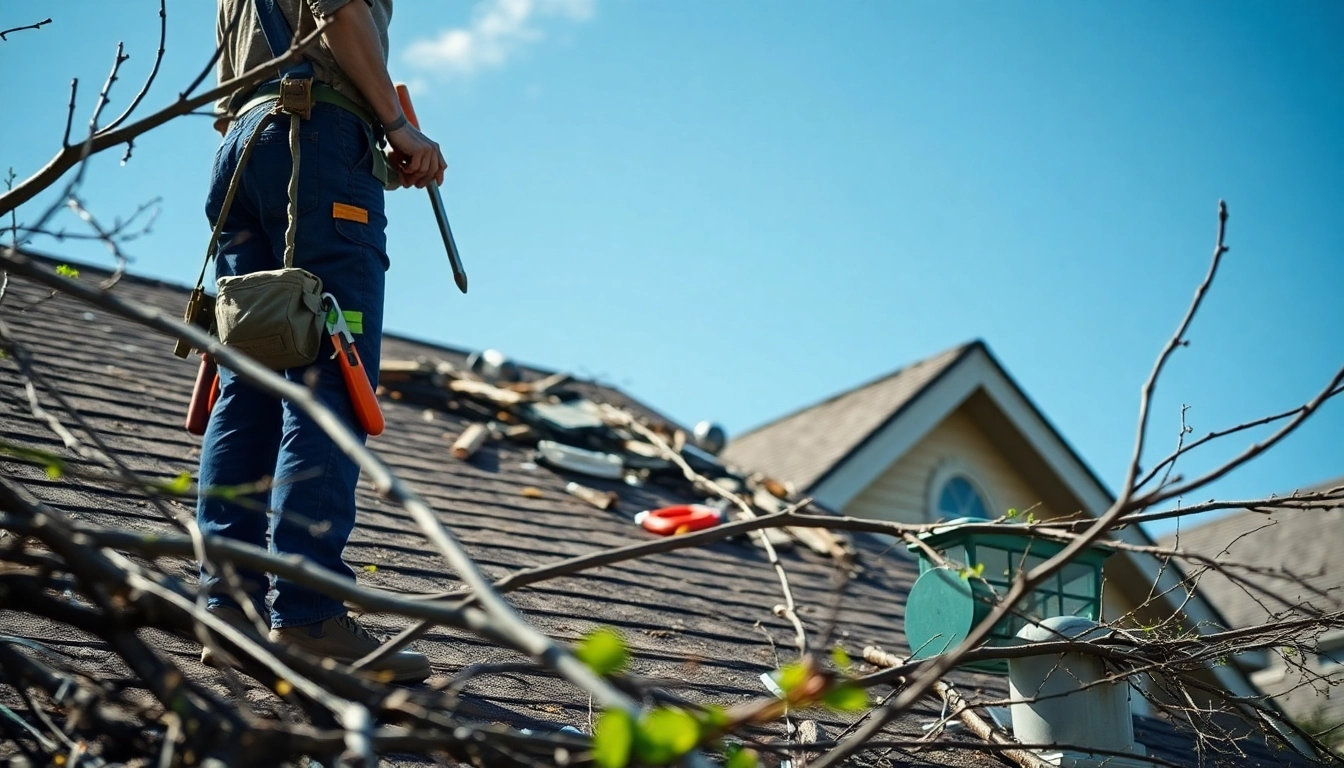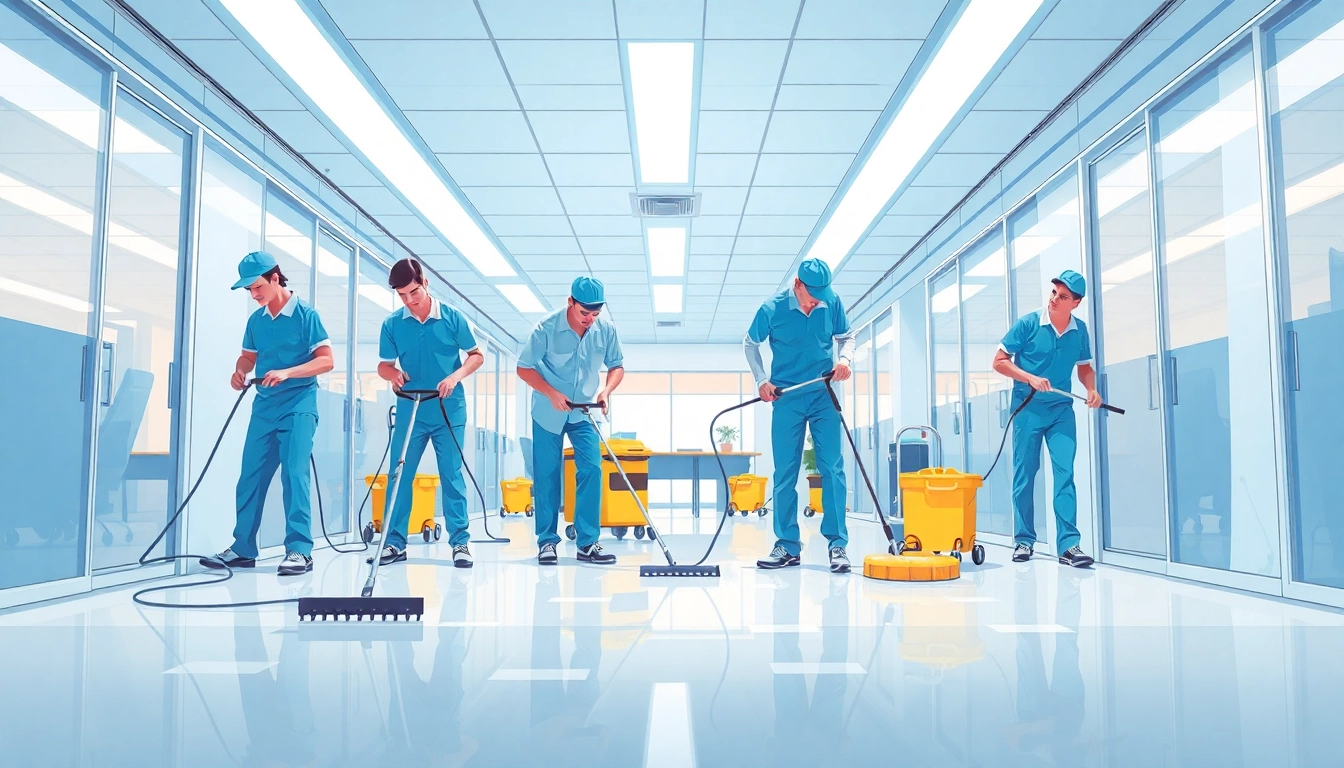Understanding Emergency Roof Repair in Texas
Definition and Importance
Emergency roof repair refers to urgent repairs needed to address sudden damage, typically caused by adverse weather conditions or unforeseen incidents. In Texas, where unpredictable weather patterns can dramatically affect roofing systems, understanding the nature and significance of emergency repairs is crucial for homeowners. When roofing emergencies arise, swift action can prevent further structural damage, reduce repair costs, and ensure the safety and protection of your home. This process often requires the expertise of professional roofing contractors who can provide effective solutions, and it becomes even more critical during Texas’s storm season, whereby roofs may suffer leaks, punctures, or other severe damages in mere moments. Investing in reliable emergency roof repair Texas services is not just prudent—it’s essential.
Common Causes of Emergency Repairs
The need for emergency roof repairs in Texas can arise from various factors, including:
- Severe Weather Events: Texas experiences extreme weather, including hurricanes, hailstorms, high winds, and heavy rain, all of which can cause significant roof damage.
- Falling Trees or Debris: During storms, trees or limbs may fall onto roofs, puncturing or crushing the structure.
- Flash Floods: Intense rainfall can lead to flooding, creating leaks and water damage in roofing systems not designed to handle such volumes of water.
- Neglected Maintenance: Over time, wear and tear can amplify the risks during sudden weather events if roofs are not regularly inspected and maintained.
- Structural Failures: Aging roofs or those with poor installation may suffer from unexpected structural issues that necessitate immediate repairs.
Signs Your Roof Needs Immediate Attention
Identifying the signs of roof distress can save homeowners significant money and prevent extensive damage. Look for:
- Visible Leaks: Stains on ceilings or walls signal active leaks that require prompt attention.
- Mold or Mildew: The presence of mold can indicate moisture problems that need addressing.
- Curling or Missing Shingles: Damaged shingles compromise the roof’s integrity and demand immediate replacement.
- Water Pooling: Areas on the roof where water collects can signal drainage issues.
- Air Leaks: Increased energy bills may suggest that air is escaping through gaps, indicative of a failing roof.
The Emergency Roof Repair Process
Initial Inspection and Damage Assessment
The first step in the emergency repair process is a thorough inspection of the roof. This involves checking for visible signs of damage, including any areas where materials may be compromised. Professional roofers will assess the extent of the damage, which includes:
- Inspecting internal features like ceilings and walls for signs of water ingress.
- Evaluating shingles or tiles for cracks, buckling, or missing components.
- Examining flashing and seals around vents, chimneys, and skylights.
- This initial assessment helps in creating a strategic plan for repairs and gives the homeowner a clear understanding of the issues at hand.
Temporary Fixes: Tarping and Securing
Once an inspection identifies areas of concern, temporary fixes such as tarping may be employed to prevent further damage. Tarping provides immediate protection against the elements until permanent repairs can be completed. This might involve:
- Covering leaks with durable tarps, secured with weights or rope to prevent displacement in high winds.
- Employing water diversion techniques to redirect water flow away from compromised areas.
- Using sealants or roofing cement to close smaller gaps or cracks temporarily.
These quick fixes are essential to minimize water intrusion and protect not only the roof but also the interior of your home.
Planning for Full Repair and Restoration
Once emergency measures are in place, a detailed restoration plan should be developed. This involves coordinating with professional roofing contractors to assess repair options such as:
- Full Roof Replacement: For roofs beyond repair, a complete replacement may be necessary, particularly for older roofs or those consistently affected by weather damage.
- Sectional Repairs: If the damage is localized, contractors can suggest replacing damaged sections instead of the entire roof, thus saving costs.
- Material Upgrades: Investing in higher-quality, weather-resistant materials during restoration can improve durability and performance in future weather events.
- Warranty Considerations: Choosing contractors who provide warranties for repairs ensures quality coverage and peace of mind.
Choosing the Right Roofing Contractor
Credentials and Experience
Selecting a qualified roofing contractor is crucial for effective emergency repairs. Consider contractors who possess:
- Licensing: Verify that the contractor is licensed to operate in Texas, ensuring they meet state regulations.
- Insurance: A credible contractor should carry both liability insurance and worker’s compensation to protect against additional liabilities.
- Experience: Look for a contractor with a proven track record in emergency repairs, especially within the specific type and style of roof you have.
Emergency Services Offered
Ensure that the roofing contractor provides the necessary emergency services, which should include:
- 24/7 availability to handle emergencies promptly.
- Guarantees on their emergency work along with follow-up assessments.
- Options for preventative maintenance post-repair to minimize the chances of reoccurrence.
By confirming their emergency service capabilities, you can ensure that help is available when you need it most.
Client Reviews and Testimonials
Feedback from previous clients can provide valuable insights into a contractor’s reliability and quality of work. Look for:
- Online Reviews: Review platforms such as Google, Yelp, or Angie’s List offer firsthand accounts of customer experiences.
- Case Studies: Ask potential contractors for examples of similar past projects, especially those involving emergency repairs.
- Referrals: A good contractor should be willing to provide references upon request.
Cost Factors for Emergency Roof Repairs
Estimating Repair Costs
The cost of emergency roof repairs in Texas can vary widely based on several factors, including:
- Extent of Damage: More extensive damage results in higher repair costs.
- Roof Type and Materials: The choice of roofing materials can significantly influence prices, with some materials being costlier to repair or replace than others.
- Labor Costs: Local labor rates will affect overall expenses, with experienced professionals generally charging more for their expertise.
Consulting multiple contractors for estimates will provide a clearer picture of potential repair costs.
Insurance Considerations
Homeowners should also evaluate their insurance policies regarding coverage for emergency roof repairs. Key aspects to assess include:
- Understanding your deductible and what percentage of costs is covered under specific circumstances.
- Documenting damage thoroughly with photographs for insurance claims.
- Contacting your insurance adjuster post-inspection for clarity on the claims process.
Being informed helps ensure that you maximize your insurance coverage while navigating post-damage repair situations.
Financing Options for Homeowners
For emergency roof repairs, several financing options may be available:
- Home Improvement Loans: Many financial institutions offer loans specifically for home repairs which can cover emergency situations.
- Payment Plans: Some roofing companies offer flexible payment plans that allow homeowners to repay the costs in manageable increments.
- Government Assistance Programs: Look into local resources or programs focusing on disaster recovery that might aid in funding emergency repairs.
Preventing Future Roofing Emergencies
Regular Maintenance Practices
Regular maintenance is vital in preventing emergencies. Consider implementing the following strategies:
- Regular Inspections: Schedule inspections twice a year and following major weather incidents to catch potential issues early.
- Cleansing Debris: Ensure gutters and downspouts are free from debris to prevent water buildup on the roof.
- Professional Tune-Ups: Hire city-certified contractors for periodic maintenance inspections that can extend your roof’s lifespan.
Seasonal Preparedness Tips
Texas experiences a wide range of weather throughout the year. Here are some seasonal tips:
- Spring: Inspect roof for winter damage, repair flashing, and seal any gaps.
- Summer: Ensure ventilation and insulation are adequate to cope with heat, preventing overheating and potential material failure.
- Fall: Clean gutters and inspect for leaves or debris that could block drainage.
- Winter: Insulate your attic to prevent ice dams, which can cause significant water damage.
Investing in Quality Roofing Materials
Choosing high-quality materials when installing or repairing roofs can significantly reduce the likelihood of future emergencies. Keys to consider include:
- Durability: Select roofing materials that have proven durability in extreme weather, such as metal roofing or high-quality shingles.
- Energy Efficiency: Opt for materials that provide better insulation and energy savings over time.
- Warranty: Invest in products with strong manufacturer warranties that indicate confidence in the material’s longevity.



